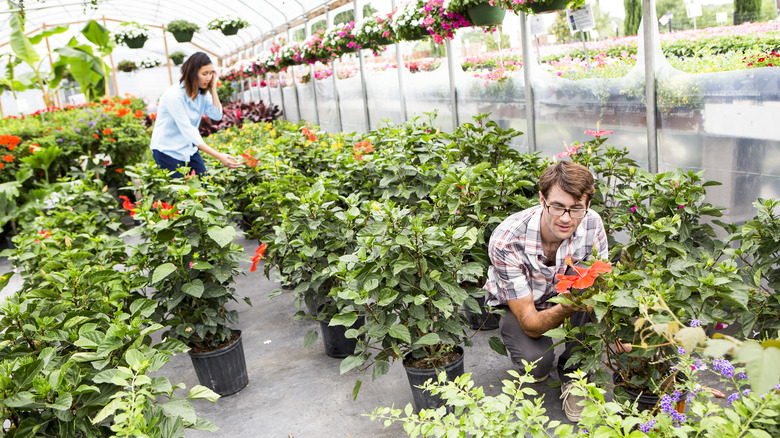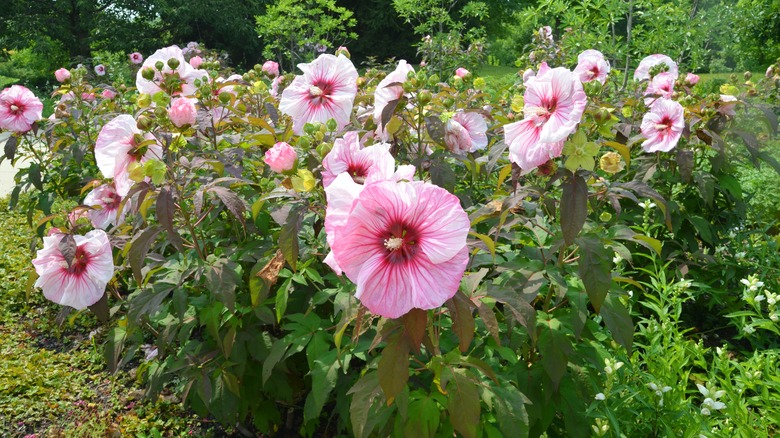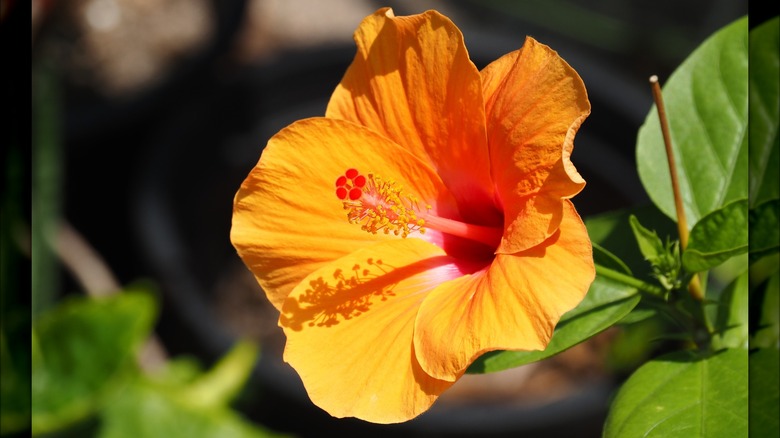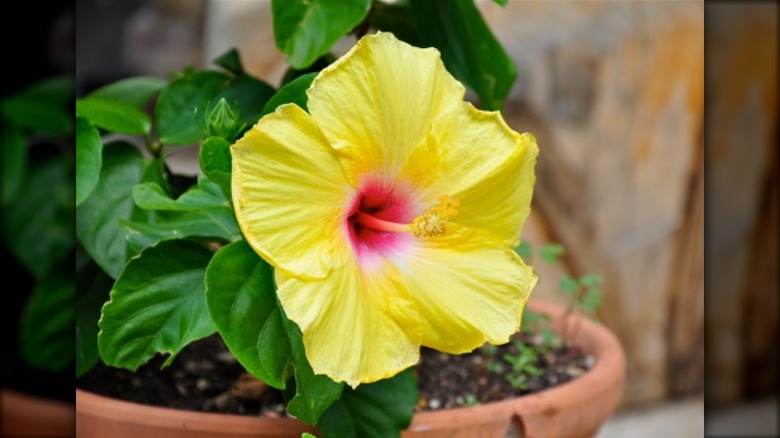Hardy Vs Tropical Hibiscus: What's The Difference & Which Type Should You Get?
Hibiscus plants are coveted for their stunning blooms, which start in the spring and continue through fall. Some native varieties feature simple flowers, while more exotic cultivars offer dynamic petal-packed blossoms. There are several options to consider before you decide what kind of hibiscus is right for your garden, and your USDA hardiness zone, desired bloom color, and where you want to grow your plants will help determine the best type of hibiscus for your purposes. One thing that's important to keep in mind is that hardy hibiscus plants can survive year-round in their allotted zones, while tropical varieties will not survive freezing temperatures.
Before I dive into the differences between hardy and tropical hibiscus plants, I also want to define native, non-native, and invasive plants. The terms can be confusing, but one key to keep in mind is that not all non-native plants are invasive, but according to the definition developed by the USDA, all invasive species are non-native. There are some invasive hibiscus species, like the rose of Sharon (Hibiscus syriacus L.), so before you plant, contact your local extension service to make sure your choices are not harmful to the ecosystem.
All about hardy hibiscus plants
Hardy hibiscus plants are perennials that can survive the cold temperatures in a certain region. Most native varieties fall into this category, although there are also many beautiful cultivated types of hibiscus that are hardy in some cooler regions. The most cold-tolerant varieties of native hibiscus include hardy hibiscus (Hibiscus moscheutos) and halberd-leaved rose mallow (Hibiscus laevis), which can survive up to zone 4.
The flowers of native varieties tend to be simpler than their cultivated cousins, so if you want something bolder, many non-native options feature huge, bold blooms, like Summerific 'Holy Grail' from Proven Winners. The varieties of native and non-native hardy hibiscus plants available to you will depend largely on your region, but always check plant labels to make sure the option you choose is hardy in your zone. Just because a plant is available at your local garden center doesn't necessarily mean it's hardy where you live, so do your homework to avoid disappointment when winter arrives.
Tropical hibiscus features
Tropical hibiscus varieties are only hardy in zones 10 and warmer because they do not tolerate frosty conditions. To thrive, these plants need warm weather and plenty of sun. While there are plenty of cultivated hardy tropical hibiscus varieties, they can't quite compare with the stunning display and multitude of colors provided by tropical options. If you live in regions in which these varieties are hardy, you can plant gorgeous hibiscus in the ground for beautiful blooms from spring through winter, depending on the type and where you live.
Even if you live in a cooler climate, you can enjoy the beauty of tropical hibiscus by growing it in a container. If you choose a full-sized variety, regular pruning can keep it small enough to move inside during cold months. Alternatively, select a dwarf option that won't exceed 4 feet tall. There are two ways to overwinter a tropical hibiscus. If you have a warm, sunny spot or a sunroom, your hibiscus will continue to thrive throughout winter. If that's not an option, a spot in a basement or garage will allow the plant to go dormant as long as the storage area does not drop below freezing. In the spring, place your tropical hibiscus back outside to break dormancy.
Which type of hibiscus is right for you?
The good news about selecting a hibiscus for your garden is that there's no shortage of options no matter where you live. You're also not limited to either hardy or tropical options. For those who really love hibiscus, a combination of both creates a non-stop bloom fest in your garden during warm months. Hardy options reach about 7 feet tall at maturity, while standard tropical varieties can grow up to about 5 feet in a container. Creating a display of both in your landscape adds extra interest with varying sizes and colors.
If you live in a region that experiences frost and have limited indoor space to overwinter a tropical hibiscus, it's best to stick to hardy varieties that you won't have to worry about. Also, moving large planters indoors and back out can be an arduous task. But, for those who really want the extra exotic blooms of tropical varieties, it may be worth the extra effort.



